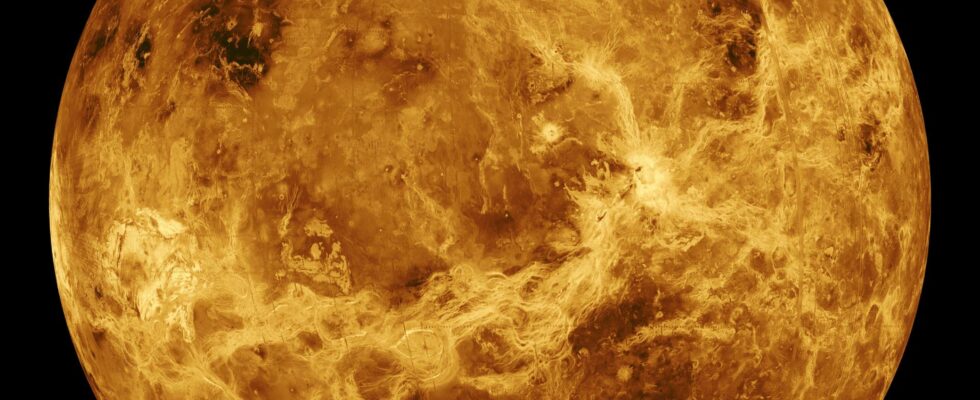By comparing radar images from NASA’s Magellan mission around Venus, researcher Robert Herrick finally managed to find direct evidence of active volcanism. This result had been assumed for decades, and we finally owe it in part to… the boredom generated by hours of meetings.
But also a lot of work, boredom, that’s not everything!
This meeting could have been an email
It’s a discovery that has the merit of starting in the daily lives of millions of workers at the heart of the 2020 pandemic: an overflow of Zoom meetings. Robert Herrick, a researcher at the Institute of Geophysics at the University of Alaska, is bored and decides to use these “lost” hours to observe and compare radar images of Venus.
The latter are from the Magellan mission, which arrived around the planet almost 33 years ago, in August 1990. And contrary to what one might imagine, the mountains of data from this mission, which lasted four years, have not all been fully exploited. The advent of digital mining then led to researchers being sent stacks of CDs with the “images” until they were re-digitized, indexed and stored online two decades later.
Die Hard: Venus
The planet Venus is completely covered by several cloud layers, at different altitudes, of different compositions and densities. The weather here is complex, with one exception. Indeed, we know that on the surface, it’s hell every day: 450°C, soil sterilized by acid rain, strong winds and a surface pressure of around 75 bars. However, it is the closest planet to Earth, with a similar size and probably a similar formation process.
Is she really that inactive? Since the Soviet Venera missions in the 1970s and 1980s, researchers have suspected different regions to harbor active volcanoes (because hell wouldn’t be complete without earthquakes and lava flows). ESA’s Venus Express mission then laid a conclusive foundation, but was unable to provide direct proof. This is where Robert Herrick’s research comes in.
Robert becomes Volcano Man
The latter focused on radar readings of two volcanoes suspected of being active on Venus, Ozza Mons and Maat Mons. The orbit of the Magellan probe did not allow an ideal revisit (passing over a point at a fixed interval for fixed observations), so he had to search the available data for about 200 hours, comparing them manually. And finally, he was able to observe a change that had taken place between February and October 1991 on the northern slope of Maat Mons. The side of the volcano has changed. An area of several square kilometers is no longer the same and has all the characteristics of a lava flow.
But what if it was a simple landslide? The researcher worked with Scott Hensley, one of his colleagues at the JPL lab, who modeled the area and tested dozens of what-if scenarios. And bingo, it’s a volcanic flow. The news is causing a stir, because unless you directly observe the flow in formation, you cannot produce more direct evidence. This is an important advance in better understanding Venus and its internal processes, and which may even advance planetology as a whole (until now, it was thought that only Earth and Jupiter’s moon Io had active volcanoes). And it brings prime sites to observe in the future!
In budgeto VERITAS
The next step is naturally to check with new measurements, whether for this area in particular or for the radar study of the surface over a new substantial time interval. Not only have the radars improved enormously, but in addition, since Magellan, no other probe has left to complete the work.
There is good news and bad news about this. The good news is that NASA has already approved a mission with a Venusian radar probe: VERITAS. But ironically, you should know that after an audit launched last year to point out the problems linked to the Psyché mission, the JPL laboratory was considerably restrained… to the point of seeing certain budgets cut with a machete.
This directly affects VERITAS. If the 2024 budget proposal is accepted, the mission will only receive $1.5 million, the salary of the small dedicated team. The project is therefore on hold. In the scientific community, the article and the official presentation have only been out for two days, but there too, the volcano is rumbling!
Source : NASA

10